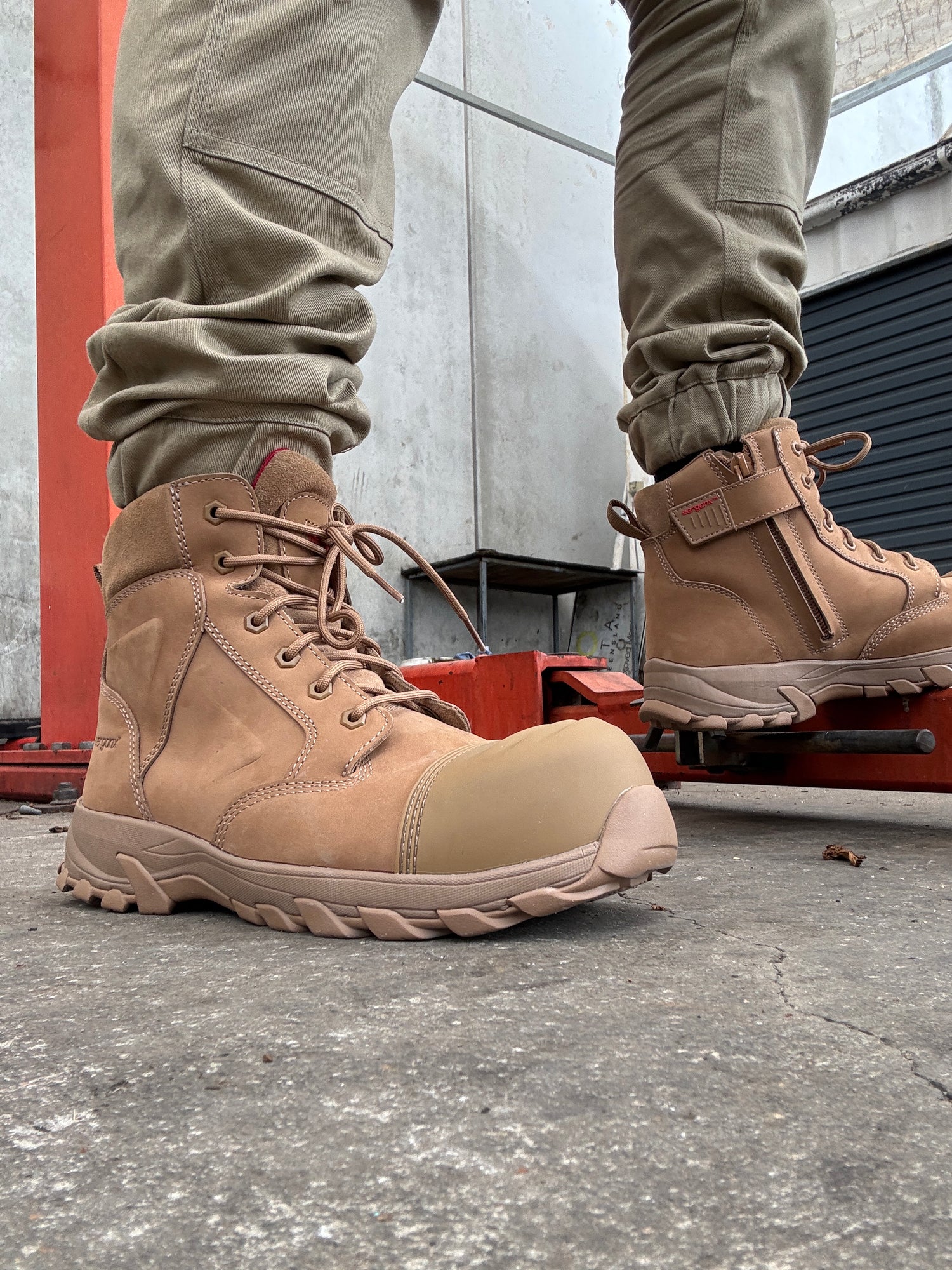HOME/ WORK BOOTS / WHAT MAKES A WORK BOOT COMFORTABLE
It's the end of a long work day and your feet are achy, uncomfortable, and tired. Unfortunately, this is common for people who spend extended periods of time on their feet. Foot pain is also a very common issue for those who face tough terrains and slippery surfaces.

Safety footwear is designed to protect against dangers such as falling objects, compression injuries, punctures, and electrical hazards. It is worth noting that different jobs pose different hazards, so you should ensure your work boots meet the safety standards of your work environment.
Choosing the right work boots can not only reduce the risk of injuries, but they can significantly impact foot health and minimize aches and pains. In today's post, we explore the factors that affect the comfort of work boots. Understanding these can help in selecting safety boots that provide both protection and support to help keep your feet happy and healthy.
How your safety boots are designed matters
When it comes to choosing comfortable shoes, there are things that you should not compromise on. These features apply not only to work boots but also to running shoes and other protective footwear. In general, there are four aspects to consider: flexibility, stability, shock absorption, and foot support.
Flexibility and bending points
Flexibility is a crucial aspect of a comfortable work boot. Ideally, your work boots should only bend where the toes meet the rest of the foot, allowing for natural foot movement. Boots that crease through the middle can strain the midfoot, leading to discomfort. By restricting bending in the proper location, your boots should allow the foot's structures to rest and work efficiently.

Stability and twisting
Stability makes a big difference in how comfortable boots can be. Excessive twisting can be detrimental, especially on uneven ground. Boots with good stability reduce the workload on the legs. Thus, excessive strain, foot fatigue, and injuries are avoided. Boots with slip resistant outsoles can add stability. By offering enhanced traction over slippery surfaces, you can prevent slips, trips, and falls.
Shock absorption
Another crucial factor is shock absorption. When you walk, your heel absorbs the highest amount of force. A quality work boot should have a shock-absorbing midsole that cushions and minimizes this force to reduce the impact on the legs and feet. This absorption allows for a smoother gait and less strain on the muscles and joints.

Foot support and the proper fit
In addition to flexibility, stability, and shock absorption, the right boot should also fit properly and offer enough foot support. So how big should your boots be? Boots that are slightly longer than your big toe should be the most comfortable. A roomy toe box also allows the toes to wiggle and prevent issues such as bunions.
For fit, we recommend lace up boots. With laces, you can adjust tightness. They also allow for a snug fit that reduces unnecessary foot movement. A pull on work boot may seem more convenient but tend to be looser. Loose boots cause rubbing and friction, which can encourage blisters. You can also consider using moisture-wicking socks to keep your feet dry and reduce the risk of blisters.
Who can benefit from comfortable work boots?
Comfortable work boots offer to a wide range of individuals. This includes anyone who engages in physically-depending work or is exposed to occupational hazards. For example, construction workers, industrial workers, healthcare professionals, and electricians.
Individuals who suffer from foot problems, including plantar fasciitis and heel pain, can also greatly benefit from a comfortable supportive pair of work boots.
Have some more questions?
Comment below with any questions or if you would like to learn more about comfortable work boots. Our team at ergonx.com.au is ready to help!


